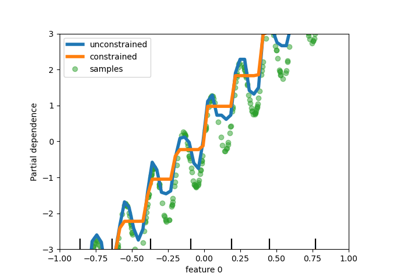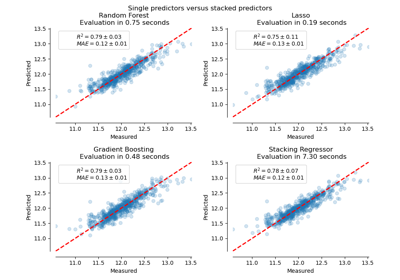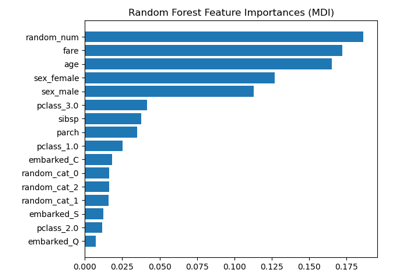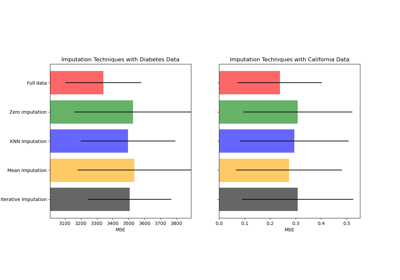sklearn.impute.SimpleImputer¶
- class sklearn.impute.SimpleImputer(*, missing_values=nan, strategy='mean', fill_value=None, verbose=0, copy=True, add_indicator=False)[source]¶
Imputation transformer for completing missing values.
Read more in the User Guide.
New in version 0.20:
SimpleImputerreplaces the previoussklearn.preprocessing.Imputerestimator which is now removed.- Parameters
- missing_valuesint, float, str, np.nan or None, default=np.nan
The placeholder for the missing values. All occurrences of
missing_valueswill be imputed. For pandas’ dataframes with nullable integer dtypes with missing values,missing_valuesshould be set tonp.nan, sincepd.NAwill be converted tonp.nan.- strategystr, default=’mean’
The imputation strategy.
If “mean”, then replace missing values using the mean along each column. Can only be used with numeric data.
If “median”, then replace missing values using the median along each column. Can only be used with numeric data.
If “most_frequent”, then replace missing using the most frequent value along each column. Can be used with strings or numeric data. If there is more than one such value, only the smallest is returned.
If “constant”, then replace missing values with fill_value. Can be used with strings or numeric data.
New in version 0.20: strategy=”constant” for fixed value imputation.
- fill_valuestr or numerical value, default=None
When strategy == “constant”, fill_value is used to replace all occurrences of missing_values. If left to the default, fill_value will be 0 when imputing numerical data and “missing_value” for strings or object data types.
- verboseint, default=0
Controls the verbosity of the imputer.
- copybool, default=True
If True, a copy of
Xwill be created. If False, imputation will be done in-place whenever possible. Note that, in the following cases, a new copy will always be made, even ifcopy=False:If
Xis not an array of floating values;If
Xis encoded as a CSR matrix;If
add_indicator=True.
- add_indicatorbool, default=False
If True, a
MissingIndicatortransform will stack onto output of the imputer’s transform. This allows a predictive estimator to account for missingness despite imputation. If a feature has no missing values at fit/train time, the feature won’t appear on the missing indicator even if there are missing values at transform/test time.
- Attributes
- statistics_array of shape (n_features,)
The imputation fill value for each feature. Computing statistics can result in
np.nanvalues. Duringtransform, features corresponding tonp.nanstatistics will be discarded.- indicator_
MissingIndicator Indicator used to add binary indicators for missing values.
Noneifadd_indicator=False.- n_features_in_int
Number of features seen during fit.
New in version 0.24.
- feature_names_in_ndarray of shape (
n_features_in_,) Names of features seen during fit. Defined only when
Xhas feature names that are all strings.New in version 1.0.
See also
IterativeImputerMultivariate imputation of missing values.
Notes
Columns which only contained missing values at
fitare discarded upontransformif strategy is not"constant".Examples
>>> import numpy as np >>> from sklearn.impute import SimpleImputer >>> imp_mean = SimpleImputer(missing_values=np.nan, strategy='mean') >>> imp_mean.fit([[7, 2, 3], [4, np.nan, 6], [10, 5, 9]]) SimpleImputer() >>> X = [[np.nan, 2, 3], [4, np.nan, 6], [10, np.nan, 9]] >>> print(imp_mean.transform(X)) [[ 7. 2. 3. ] [ 4. 3.5 6. ] [10. 3.5 9. ]]
Methods
fit(X[, y])Fit the imputer on
X.fit_transform(X[, y])Fit to data, then transform it.
get_params([deep])Get parameters for this estimator.
Convert the data back to the original representation.
set_params(**params)Set the parameters of this estimator.
transform(X)Impute all missing values in
X.- fit(X, y=None)[source]¶
Fit the imputer on
X.- Parameters
- X{array-like, sparse matrix}, shape (n_samples, n_features)
Input data, where
n_samplesis the number of samples andn_featuresis the number of features.- yIgnored
Not used, present here for API consistency by convention.
- Returns
- selfobject
Fitted estimator.
- fit_transform(X, y=None, **fit_params)[source]¶
Fit to data, then transform it.
Fits transformer to
Xandywith optional parametersfit_paramsand returns a transformed version ofX.- Parameters
- Xarray-like of shape (n_samples, n_features)
Input samples.
- yarray-like of shape (n_samples,) or (n_samples, n_outputs), default=None
Target values (None for unsupervised transformations).
- **fit_paramsdict
Additional fit parameters.
- Returns
- X_newndarray array of shape (n_samples, n_features_new)
Transformed array.
- get_params(deep=True)[source]¶
Get parameters for this estimator.
- Parameters
- deepbool, default=True
If True, will return the parameters for this estimator and contained subobjects that are estimators.
- Returns
- paramsdict
Parameter names mapped to their values.
- inverse_transform(X)[source]¶
Convert the data back to the original representation.
Inverts the
transformoperation performed on an array. This operation can only be performed afterSimpleImputeris instantiated withadd_indicator=True.Note that
inverse_transformcan only invert the transform in features that have binary indicators for missing values. If a feature has no missing values atfittime, the feature won’t have a binary indicator, and the imputation done attransformtime won’t be inverted.New in version 0.24.
- Parameters
- Xarray-like of shape (n_samples, n_features + n_features_missing_indicator)
The imputed data to be reverted to original data. It has to be an augmented array of imputed data and the missing indicator mask.
- Returns
- X_originalndarray of shape (n_samples, n_features)
The original
Xwith missing values as it was prior to imputation.
- set_params(**params)[source]¶
Set the parameters of this estimator.
The method works on simple estimators as well as on nested objects (such as
Pipeline). The latter have parameters of the form<component>__<parameter>so that it’s possible to update each component of a nested object.- Parameters
- **paramsdict
Estimator parameters.
- Returns
- selfestimator instance
Estimator instance.







